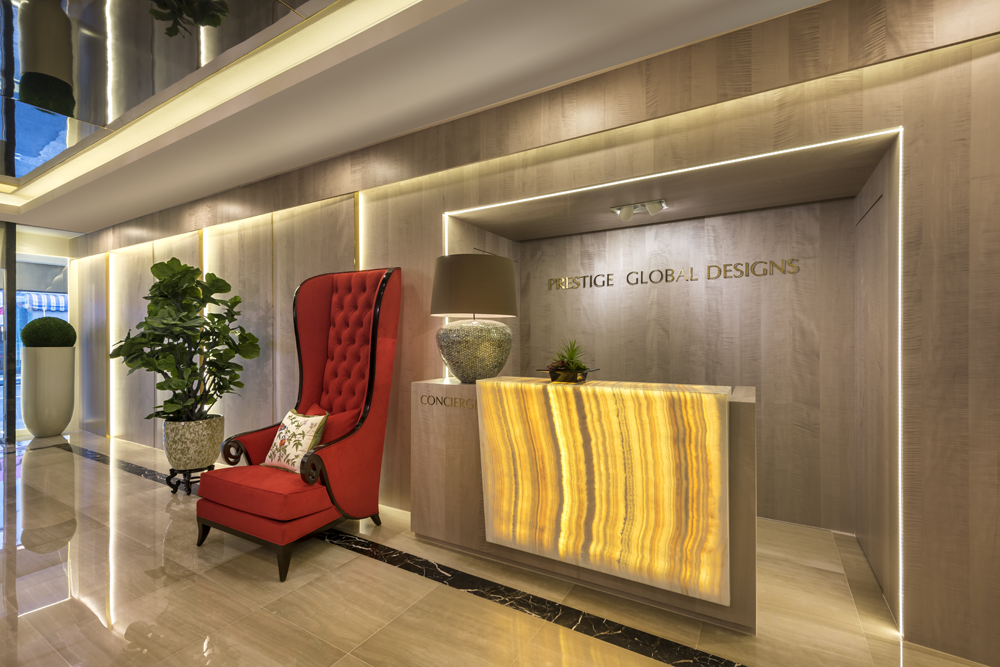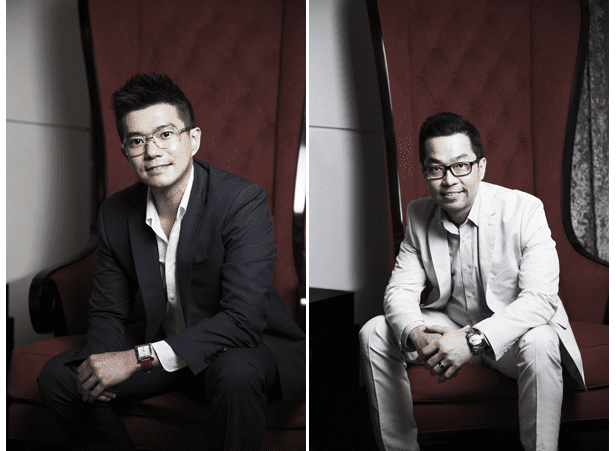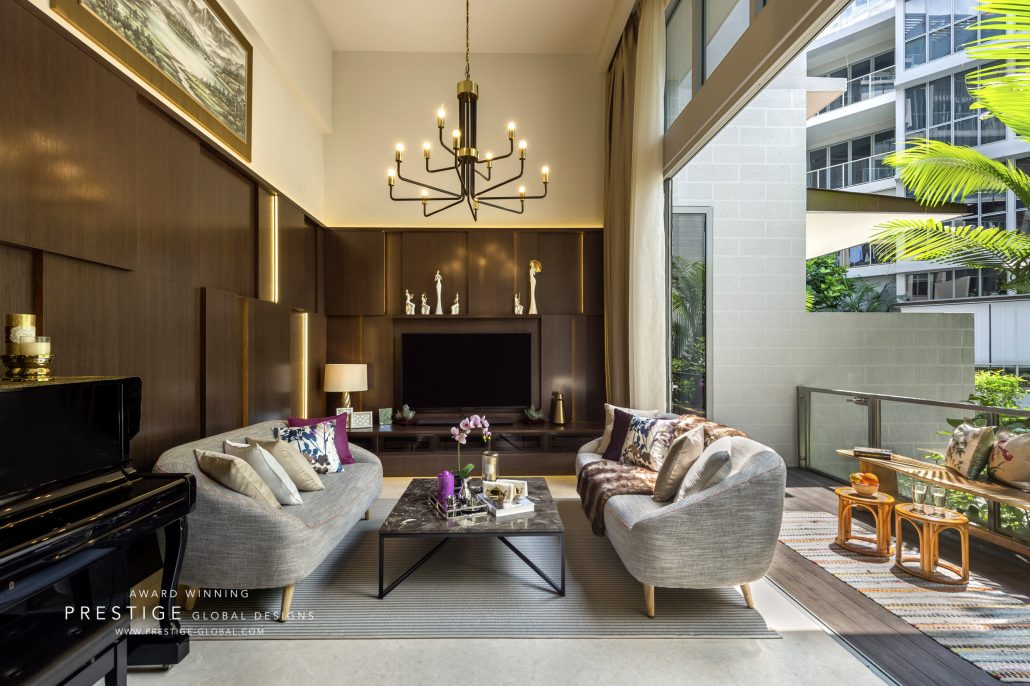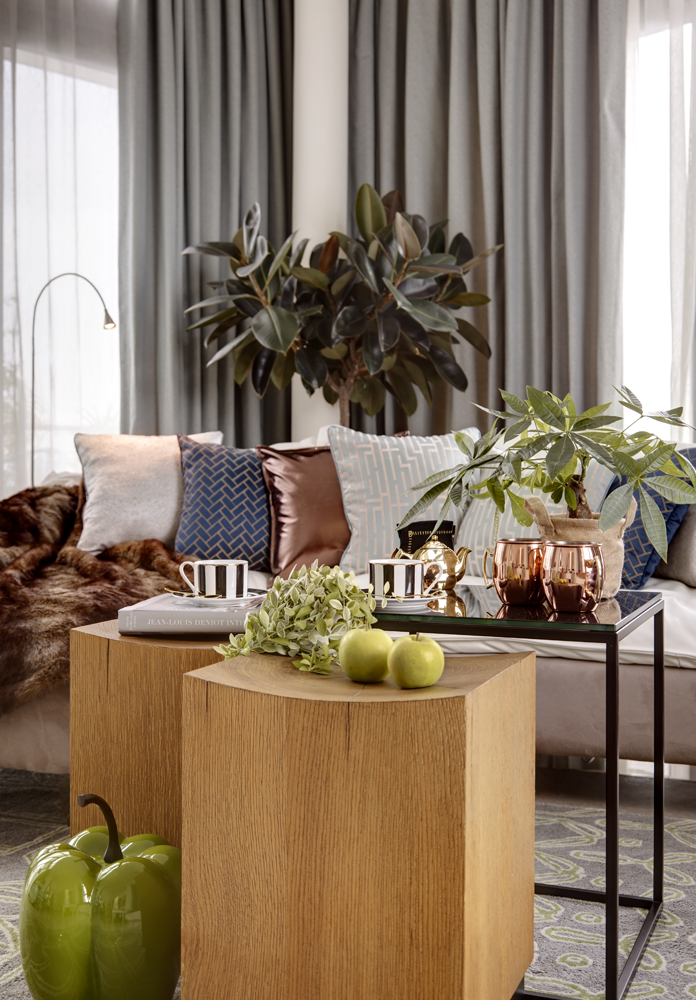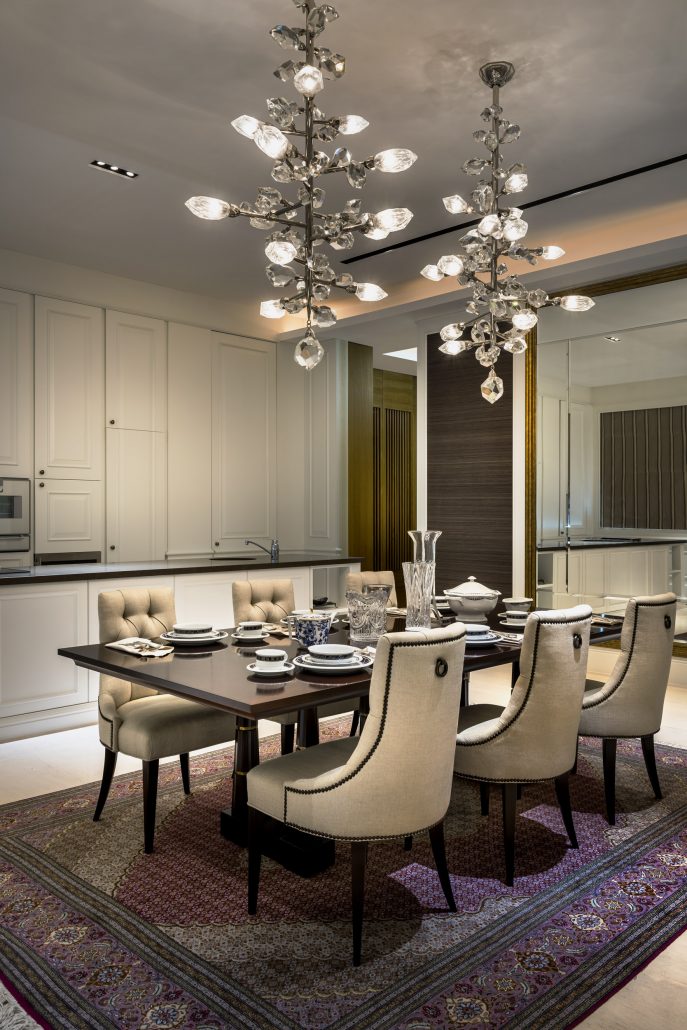Sophistication, finesse, opulence – these are some words that best describes the work that the team at Prestige Global Designs is capable of. Headed by Managing Director Michael Ong and Director Jeremy Tay, Prestige Global has bagged numerous accolades on both a regional and a global level.
One look at their website, and you’d be met with various accreditations for best interior design works across residential and commercial spaces, including “Best Office Interior” for Prestige Global Designs’ very own showroom. It’s not difficult to see how they won it – a visit to the showroom filled us with awe; it was almost as if we were at the lobby of a high-end hotel.
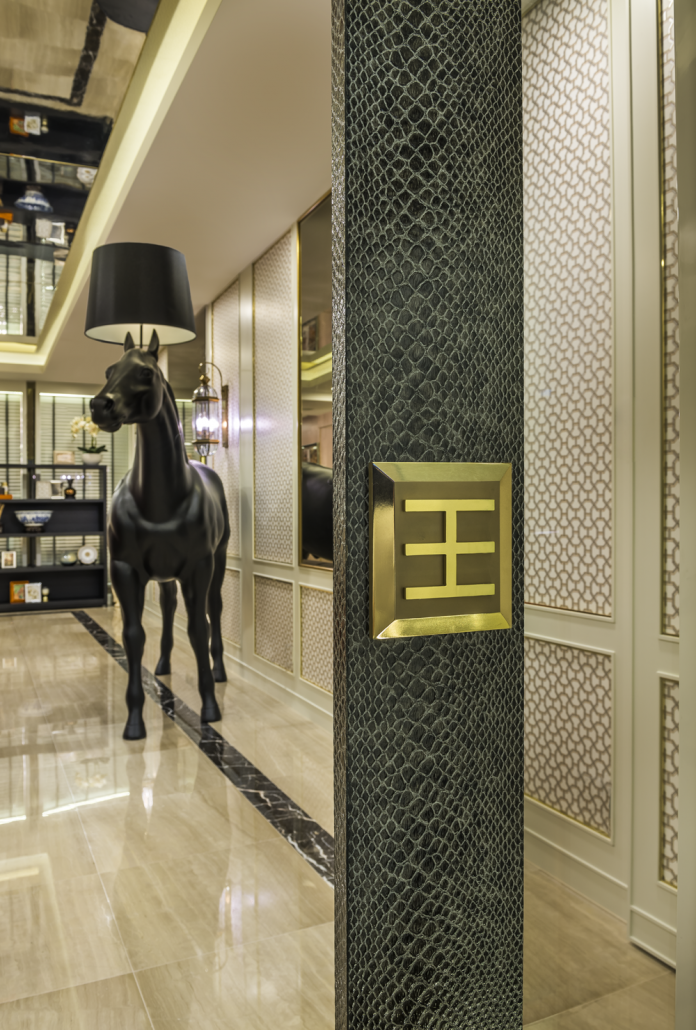
We later found out from Michael and Jeremy that it was indeed their intention – to dress their office up as it would be the ideal way to present their work to their clients.
What makes an interior design project successful? For one, it’s definitely not just about using the most expensive or stylish looking furniture. It’s also not about whether or not they keep up with the latest trends. Prestige Global believes that customer satisfaction is of utmost importance and strives to ensure that at the end of the day, their designs are able to meet with the client’s expectations while retaining their own creative directions and beliefs.
An afternoon chat with Michael and Jeremy definitely gave us an insightful look into what it is like being the crème de la crème of the interior design industry.
The Redbrick Team: How did Prestige Global Designs come about?
Michael: Essentially, our objective was to serve the niche market. Prestige Global recognises that we have the ability and the flair, with good eyes to provide that kind of design, which is why Prestige Global came about. Also, the objective was not just Singapore but to grow globally, which is why Prestige Global. I was trained in London and I was exposed to quite a few international customers while studying there. Previously, we were doing this portal, but it didn’t take off because it involved a lot of financial commitments and monitoring of the systems.
Concurrently we were serving our group of clientele which involved interior design, architecture, and this group of clientele are high net worth clients, so that spurred us to properly develop and set up Prestige Global. At that time, it was still under Prestige Interiors, it wasn’t a formal company registered with ACRA. so, we then decided that since a lot of enquiries and customers came in from Prestige Interiors, we then decided to set up Prestige Global.
The company started to take shape with Jeremy’s involvement. As you’d know, Jeremy is a PhD scientist, he joined us actively about 8 years ago and with his help, the company has really propelled forward. From just the two of us, we now have a team of 10. We have also achieved 2 times Asia-pacific best interior awards at the International Property Awards and that has given us a lot of presence, and we also make our presence felt in premium magazines like Palace, and Singapore Tatler Homes. We try not to position ourselves somewhere else.
This is our direction with Prestige Global.
The Redbrick Team: At which point in your life did you decide that you wanted to pursue interior design?
Jeremy: I was in the education industry prior to this, but I started seeing that Michael was very busy and shorthanded, so I decided to just help out. Then after that, I felt that it was fun, yet challenging, and very fulfilling so I’ve hung on to it till now.
Michael: The change for interior design came about when I was previously flying with Singapore Airlines as a cabin crew. I did a flight to London and one of my teammates recommended me to meet with a friend in London. That seemed to be interesting, because I was looking forward to something that is design-related or art-related. so, I had a conversation with her and found out about the course, the duration of the course and how much it would involve. So, I started to plan for it.
I was actually offered a position by 2 companies during my graduation. One was from Saudi Arabia, and the other offer came from Hong Kong. I actually shipped all my things to Hong Kong, but it didn’t take off. That was in 1997, and I came back to Singapore and I worked on one of the minister’s house, which was coincidentally featured on City Beat (城人杂志, MediaCorp Channel 8) previously. That was how things started to take shape.
The Redbrick Team: What was your first design project?
Jeremy: I think with Prestige Global the first one I did was Orchard Residences Show Suites by CapitaLand. For that whole week, I stayed there every day from morning to night, ironing bedsheets, washing cups, etc. Everything had to be in ready condition.
Michael: The developer was very impressed, especially since it was peak season at that time. So, Jeremy had a big part to play in our winning of the Asia pacific awards.
My first project was actually my brother’s project, which is a 5-room HDB flat, and my brother’s friend happened to be one of the ministers now and I did one of the wall murals. It was quite a big one which I hand-painted myself and it was 3D. These days, we have digital print, but I hand painted it from a photo size, black and white, and transformed it into a coloured version.
That was literally the first design project that I was really quite excited about.
The Redbrick Team: Where do you draw your inspiration from?
Jeremy: Anything. Mainly fashion, I would think, but still anything and everything. Sometimes I pass by somewhere, it may be fashion, or even nature, but I’ll look at it and it really depends on how you want to see it. On our recent trip to Osaka, even the hotel that we stayed in had USB ports that were at the back of the bedhead, as compared to by the side of the bed, and that was inspiration for me.
Michael: I agree with Jeremy, it’s everything. From colour combination, to materials, textures, which goes with what. It can be from paintings, it can be from Japanese art, it can be from the graphics of japan, Osaka. It can be from the Kyoto bamboo forest. Inspirations are everywhere.
The Redbrick Team: What is the most rewarding aspect of your job?
Jeremy: Seeing the satisfaction from our customers (as cliché as it sounds). This is still my sense of achievement.
Michael: Personally, I think it’s how I’ve made money out of the business, out of the time and days of effort that I’ve been spending on my drawing boards, seeing the company grow, seeing the kind of customers which I am to attract which has come to us. From books, they say it’s always better to attract money to come to you rather than seeking money. So, I think we are getting there.
Of course, having the ability to tell my team that we are going to retire next year, that’s very rewarding for me. At the same time, I can’t give up the business because this is my baby, this is what we have created, I think we need to still give time for the new generations to have a chance to showcase/present themselves to see what they can do with their lives. we want to inspire, to motivate and reward people who are willing and like-minded as us.
The Redbrick Team: What about the most frustrating one? / what are some of the challenges you face as a designer?
Michael: I think the frustrating part comes when we don’t get to close a deal that we hoped to close, let’s be honest. We can’t get every deal that comes along our way, there is always competition, there will always be someone who is better than us. We always try to be the stronger link that people are looking to put their bets on.
So, the frustration is not being able to reach our own tangible/intangible goals, which is normal. I think we all need frustrations and challenges to motivate us forward, so I look at it positively because I think these are really important as a human being.
The Redbrick Team: What is the biggest project you have ever worked on?
Jeremy: Myself. Over the years in Prestige Global I learnt a lot. Of course, by learning I have to change and improve. It’s a journey.
Michael: I think that came as a pleasant surprise. It’s not about how big the customer is, but it’s about how we make ourselves better and right for the customers. So, when he said myself, it’s really about polishing our sharp edges from day to day, so there’s a lot of things we can learn from everyone around us. I really agree that the biggest project is ourselves!
The Redbrick Team: Which do you prefer working on – commercial or home designs?
Michael: To start with, for commercial, it is generally more challenging, given the short time. So, commercial does sharpen us in a way that you become quicker, you become faster, in terms of thinking of solutions, working with your colleagues, how to make them feel and want to work with you.
Many of our peers in our industry don’t like to do residential, because they know that residential customers, it being their home, owners can be very picky. They want to look and scrutinize into every little corner of their home. However, we find doing residential projects quite an enjoyment, especially for small spaces. Many people think that with small spaces you cannot do much, but of course, with the right budget, small spaces can become amazing with the proper usage of materials.
The Redbrick Team: What does your home say about you?
Jeremy: Privacy. Peaceful, quiet, to be able to be myself. It’s not that I’m not myself when I come to work, just that they are different sides. so home would be a side of me that is more private. But apart from that it’s just housekeeping, and taking care of my 3 cats. I also like to watch tv.
Michael: I have 2 homes – my main home being the office. I spend more time here in the office. The office is a space where it is an expression of being mindful and sensitive of customers, colleagues and clients. My second home is very simple, it has all the basic essentials, TV, sofa, but it is not lavish. It is a space where I can just have the sufficient necessities, sufficient space to put my belongings, inexpensive furniture. I don’t indulge in buying expensive things although I can, especially in the office. So, in my own home, I like to keep things very simple.
The Redbrick Team: In your opinion, is interior design an art or science?
Jeremy: Both, definitely both. Even colours, for example, certain colours conjure certain emotions or certain settings. I would regard that as part of science, and that has also been used in many art forms, so it would definitely have to be both. Art can create controversy and it can also create harmony. When you’re talking about homes, we would think that the art would have to create some sort of harmony. Why do people feel harmonious? it’s because when they see something, the brain would interpret it as harmonious. Even the way we colour match, that’s how the brain interprets it, so it’s some sort of science.
Michael: I think the art part of the interior design industry, is really about finesse, it’s not about putting the most expensive marble on the wall or the floor, but it is really a combination of putting things that looks good. Not just look good for yourself; but it is also important for us as business owners to make sure that customers like what we present to them. At the end of the day we may like certain colours, but if customers don’t like what we suggest then it’s not a good art. In my opinion, the most important science part about interior design is the ability to convince and put together a design solution that appeals and works for the customers. It’s about putting the right blend and right dosage of furniture and colours, and appeal to the end-user who is the owner. That is probably the most important scientific part of the business and I think that requires experience. It is really an art by itself.
The Redbrick Team: What is your customer segment like?
Jeremy: Some are ministers, some are chairmen of listed companies, some homeowners, some specialists such as your doctors and lawyers. Our customers come from all walks of life. As for property types, we work mainly on condominiums and landed properties.
Michael: We have an interesting clientele base from overseas. Even though we are a Singapore-based company, 90% of our clientele are based overseas, from Indonesia, Cambodia, Myanmar. These are people who have helped us become who we are today, in terms of how to look at things in a sharper light. To become more responsive and witty in the conversation. Those are really important skills to learn, and we are fortunate enough to learn from these people.
Of course, with this customer segment, with it comes high expectations. Customers come to us buying an expectation, not buying a product. They are buying an expectation of what Prestige Global can do for them.
The Redbrick Team: What are the most popular interior design trends of this year?
Michael: People who live in Singapore are very well travelled. We see an increasing trend of classical designs, but in a contemporary context. Typically, if you go to Europe or the united states, they have very strong classical influences. As people are being exposed to such influences and environments, they are becoming more receptive to such design concepts. But being Asians, they don’t dare to go full-fledged baroque style, therefore we have a hybrid – contemporary/modern classic.
Jeremy: I also see a lot of eclectic trends – a mixture of 3-4 trends in one interior. I don’t think there’s really a fixed trend, but what I’ve noticed is what it conjures. Nowadays houses conjure a look that is not too heavy, more elegant, yet have the luxury, sophistication, that sort of image.
Want to find the best mortgage rate in town? Check out our free comparison service to learn more!
Read more of our posts below!


